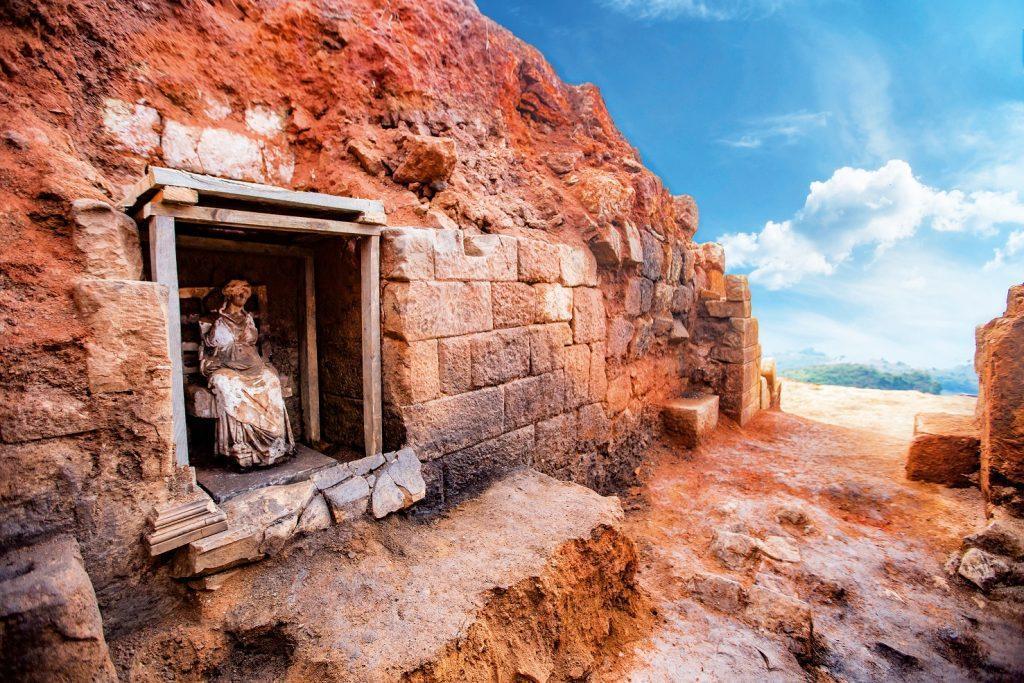
The construction of an andesite quarry in Turkey’s Black Sea province of Ordu has gone ahead despite a court ruling in 2011 that said the area’s historical value made the site inappropriate for such works.
In 2016, excavations revealed a 2,100-year-old marble mother goddess sculpture of Kybele in the Kurul Castle, one of the first archaeological digs in the region.
Now, in that same area, dynamites are blowing up historic sepulchers, or rock tombs, further threatening the remaining areas, including the ancient Kurul Castle.
“We don’t know who to complain to, or what to do,” local environmentalists said.
“Every day, those responsible for the stone quarry destroy the historic castle’s foothills with dynamites. We are anxiously waiting to see if the castle will crumble,” they added.
The locals are also anxious, partly because the Ordu Museum and Kurul Castle Scientific Excavations Directorate remains silent in the face of the destruction.
“The stone quarry is not on an archeological site, we cannot intervene,” museum authorities said, responding to worries.
An Ordu court in March 2017 had ruled that a quarry could not be constructed in the vicinity of the Kurul Castle, which features a unique sculpture of the mother goddess Kybele, following concerns that explosions could damage the artifact.
In 1996, the Samsun Cultural and Natural Heritage Preservation Board declared the castle a first-degree archaeological and natural site after requesting an environmental impact report (ÇED), prompting a court to cancel a license for the quarry, which had been opened inside the protected site.
In 2011, the board once again ruled that the area was unsuitable for the quarry. But Kırca Engineering, which operates the quarry, filed a claim at the Ordu Administrative Court, stating that the quarry and the castle were located on different rock masses and duly requested that the size of the protected site be reduced.
Although an expert report stated that the quarry could completely destroy the castle, the Ordu Museum made a different report, stating that the quarry area could be excluded from the archaeological site. The court then approved the request to exempt the quarry area from the archaeologically protected zone and canceled the board’s decision.
The Culture and Tourism Ministry subsequently appealed the court decision that gave permission for the quarry to continue operations at the site.
Finally, the Council of State reversed the decision on grounds that the quarry area was in a first-degree archaeological site and that it would harm the region.
The Ordu Administrative Court revived the suit following applications from the quarry company, even though the ministry stated that “the [historical] remains would be damaged by quakes that would be created by the explosions and that Kurul Castle was in an archaeologically rare region and should be protected.”
With this court ruling, the initial decision by the Samsun Cultural and Natural Heritage Preservation Board to deny permission for the quarry was put back into force.
Kurul Castle is located at the peak of the Kurul Rocks in Ordu’s Bayadı village and dates back to the age of King Mithridates VI, who ruled over Pontus and Armenia Minor in northern Anatolia from about 120 to 63 B.C.